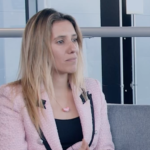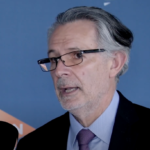The global aviation community must work together to achieve the industry’s ambitious climate targets, Angela Stubblefield, senior representative in the UK for the US Federal Aviation Administration, said.
Stubblefield acknowledged there was “no one silver bullet that gets us to net zero” and said that international collaboration and continuous dialogue was needed.
Efficiency and innovation
She said a combination of “operational efficiencies, innovations in aircraft, as well as sustainable aviation fuels”, was key to meeting the industry-wide goal of net-zero carbon emissions by 2050.
“We are working very closely with our colleagues here in the UK as well as in Europe and the European Union, and really across the globe, because aviation is global and we all have to work together,” Stubblefield added.
Incentivising industry engagement
The FAA is working to “drive and incentivise industry engagement and investment” to enhance sustainability, though Stubblefield said there were challenges when working across countries with different operational and regulatory environments.
“Whether that is the type of aircraft that are flying, the use, short haul or long haul types of flights, different countries have different regulatory authorities. It is really about finding the common areas that we can all agree upon.”
Free Route Airspace
Commenting on the Free Route Airspace (FRA) initiative, which allows operators to plan a route between two defined points, with the possibility to fly via intermediate points without reference to the ATS route network, she said: “The idea with Free Route Airspace is really around giving operators the flexibility to chose the path that is most efficient for them.
“That can be based on a number of things, the type of aircraft they are flying, whether it is passenger or cargo on board, what is the weather, the time of day, season, they all impact the most efficient route.
“Efficient routings generally mean saving time and saving fuel. All of that is good for the environment. What it takes to do that safely is really dialogue with the air navigation services provider to make sure it is done within safe limits in terms of that flexibility, and that everyone understands what that routing is going to look like.
“It is really important to have that collaboration and communication on a very routine and continuous basis between the operator and the air navigation service provider.”

